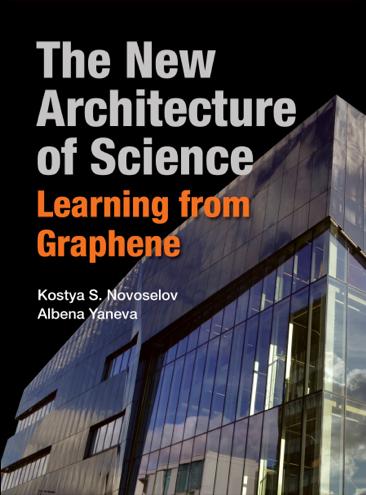The unique design of the National Graphene Institute (NGI) in Manchester, UK sheds light on the new generation of 21st century science laboratories

Credit: World Scientific
How does the architecture of scientific buildings matter for science? How does the design of specific spaces such as laboratories, gas rooms, transportation roots, atria, meeting spaces, clean rooms, utilities blocks and mechanical workshops affect how scientists think, conduct experiments, interact and collaborate? What does it mean to design a science lab today? What are the new challenges for the architects of science buildings? And what is the best method to study the constantly evolving architectures of science?
Over the past four decades, the design of lab buildings has drawn the attention of scholars from different disciplines. Yet, existing research tends to focus either purely on the technical side of lab design or on the human interface and communication aspects. To grasp the specificity of the new generation of scientific buildings, however, a more refined gaze is needed: one that accounts simultaneously for the complex technical infrastructure and the variability of human experience that it facilitates.
Weaving together two tales of the NGI building in Manchester, lead scientist and one of the designers, Kostya Novoselov, and architectural anthropologist, Albena Yaneva, combine an analysis of its distinctive design features with ethnographic observation of the practices of scientists, facility managers, technicians, administrators and house service staff in The New Architecture of Science: Learning from Graphene. Simultaneously capturing the complex technical infrastructure and the variability of human experiences that it facilitates, the book shows how contemporary laboratory buildings are the vital settings for the active shaping of new research habits and ways of thinking, and how it all ultimate leads to discoveries and socio-technical innovations.
Drawing on a meticulous study of ‘the social life’ of the building, the book offers a fresh account of the mutual shaping of architecture and science at the intersection of scientific studies, cognitive anthropology and architectural theory. By bringing the voices of the scientist as a client and the architectural theorist into a dual narrative, The New Architecture of Science presents novel insights on the new generation of science buildings.
Glimpses into aspects of the ‘life’ of a scientific building and the complex sociotechnical and collective processes of design and dwelling, as well as into the practices of nanoscientists, will fascinate a larger audience of students across the fields of Architecture, Public Communication of Science, Science and Technology Studies, Physics, Material Science, Chemistry.
The volume is expected to appeal to academic faculty members looking for ways to teach architecture beyond authorship and seeking instead to develop a more comprehensive perspective of the built environment in its complexity of material and social meanings. The book can thus be used for undergraduate and post-graduate course syllabi on the theory of architecture, design and urban studies, science and technology studies, and science communication. It will be a valuable guidebook for innovative studio projects and an inspirational reading for live project courses.
The New Architecture of Science: Learning from Graphene retails for US$49 / £45 (hardcover). To order or know more about the book, visit http://www.
###
About the Authors
Prof. Sir Kostya S Novoselov FRS is a Langworthy Professor in the School of Physics and Astronomy and the Royal Society Research Professor at the University of Manchester and the Tan Chin Tuan Centennial Professor at the National University of Singapore. He received the Nobel Prize in Physics in 2010 (together with Andre Geim) for their pioneering work on graphene. He was the leading scientist behind the design and development of the National Graphene Institute, working closely with the architects.
Prof. Albena Yaneva is Professor of Architectural Theory at the University of Manchester and Lise Meitner Visiting Chair at the University of Lund. She is the recipient of the Royal Institute of British Architects President’s award for outstanding university research (2010).
About World Scientific Publishing Co.
World Scientific Publishing is a leading international independent publisher of books and journals for the scholarly, research and professional communities. World Scientific collaborates with prestigious organisations like the Nobel Foundation and US National Academies Press to bring high quality academic and professional content to researchers and academics worldwide. The company publishes about 600 books and over 140 journals in various fields annually. To find out more about World Scientific, please visit http://www.
For more information, contact Amanda at [email protected].
Media Contact
Amanda Yun
[email protected]
Original Source
https:/




